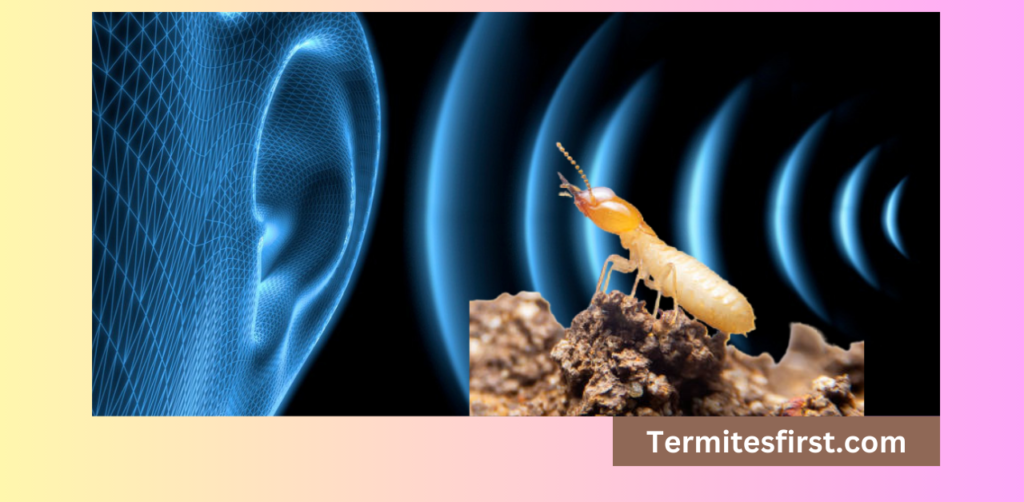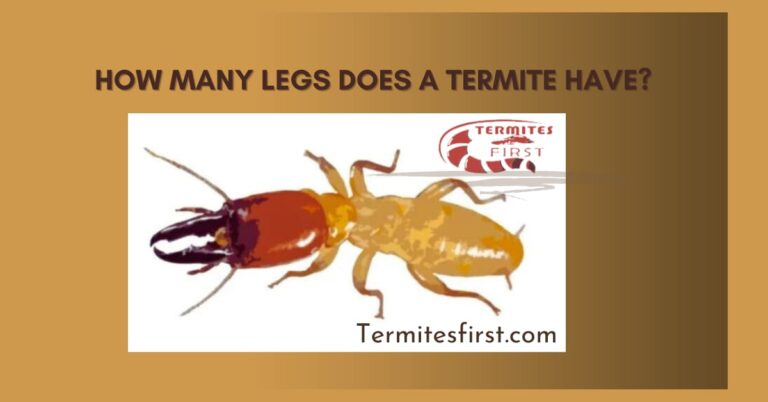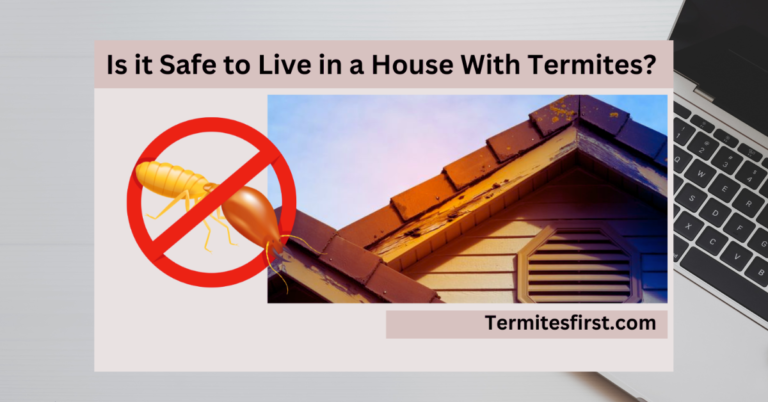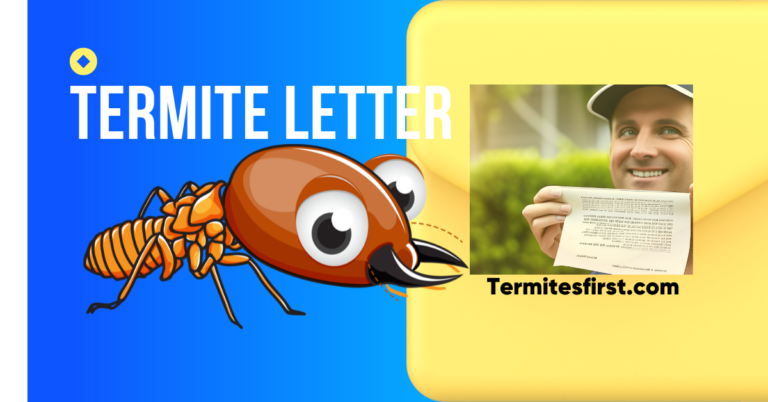Do Termites Make Noise in Walls? Listen for These Sounds
Termites are generally known to be silent pests, as they do not make noise that is easily detectable by humans. They communicate primarily through the use of pheromones, vibrations, and other chemical signals. However, when termites are disturbed or threatened, they may produce a soft clicking or rustling sound by banging their heads against the walls of their tunnels.
This noise is typically very faint and may not always be audible, especially in larger infestations where other environmental noises can drown out the sound. Overall, while termites are not known for making loud or distinct noises, they can still produce subtle sounds under certain circumstances.
Key Takeaways
- Listen Carefully: Pay attention to any unusual sounds like clicking or rustling, as they could indicate termite activity.
- Act Promptly: If you hear termite noises, take immediate action by contacting a professional pest control service to assess and address the infestation.
- Regular Inspections: Conduct regular inspections of your property to catch termite infestations early, potentially saving you time and money in the long run.
- Stay Informed: Educate yourself on common termite sounds and signs to be better equipped to detect and prevent termite damage.
- Combine Methods: Use a combination of sound detection and visual inspections to check for termites in your home thoroughly.
- Preventive Measures: Implement DIY anti-termite tips such as maintaining proper ventilation, reducing moisture levels, and removing wood debris around your property to deter termite infestation
Do Termites Make Noise

Detection Methods
Listen for head-banging sounds to detect termites in your home. These noises are created when the termites bang their heads against the walls of their tunnels.
Termites make noise as a form of communication within their colonies. The sounds they produce can vary from soft rustling noises to distinct tapping sounds, depending on the species.
Activity Patterns
Termites are most active at night, increasing the chances of hearing their noises. During this time, they are busy foraging for food and expanding their colonies, leading to heightened activity levels.
I once heard faint clicking sounds coming from my walls late at night and decided to investigate further. Upon closer inspection, I discovered a termite infestation that required immediate attention.
Common Termite Sounds
Tapping
Termites are known for producing distinct tapping sounds, which are created when they communicate with each other. These noises can be a sign of termite activity within a structure. The tapping sound is often heard in the walls or wooden structures where termites are present.
Buzzing
Another common sound made by termites is buzzing, which is usually associated with soldier termites warning the colony of potential threats. The buzzing noise can vary in intensity and frequency depending on the situation. It is crucial to pay attention to buzzing sounds as they can indicate a nearby termite infestation.
Head-Banging
One of the most intriguing termite sounds is head-banging, a behaviour exhibited by worker termites to signal danger or warn others about disturbances. This rhythmic sound is often produced when termites sense a threat or when they are disturbed during their feeding activities.
When it comes to differentiating between termite sounds, it’s essential to understand the nuances between chewing and swarming noises. Chewing sounds typically indicate active feeding by worker termites, while swarming noises are associated with reproductive termites seeking to establish new colonies.
Detecting Termites Through Sounds
Listening for Buzzing
Termites are not always silent creatures; they can produce buzzing sounds that are audible to the human ear. Worker termites usually make these noises as they move within their tunnels and chew on wood. The amplitude of these buzzing sounds can vary based on the size of the termite colony and the activity level within it.
Identifying Clicking Sounds
When trying to detect termites in your home, pay close attention to clicking sounds. These noises often indicate the presence of soldier termites, which use their legs to create these distinctive clicking sounds when feeling threatened or disturbed. By being attentive to these sounds, homeowners can locate termite infestations early.
Recognizing Chewing Noises
One common way to identify termite activity is through the sound of them chewing on wood. As termites feed on wooden structures, they create hollow tunnels within the wood, leading to distinct chewing noises that can be heard if you listen carefully. These noises signal ongoing damage to your property and should prompt immediate action.
When Termites Get Noisy
Threatened Behavior
Termites become more vocal when feeling threatened, emitting soft tapping sounds. This behaviour typically occurs when their nest is disturbed or under attack. The increased noise serves as a warning signal to other termites in the colony.
Indication of Infestation Size
The level of termite noise can indicate the size of the infestation within your property. If you hear louder, more frequent noises, it could suggest a larger population of termites present. This information is crucial in determining the extent of the infestation and planning appropriate pest control measures.
Structural Damage Alert
Termite noise can also serve as an early warning sign of potential structural damage in your home. As termites feed on wood, their activity can weaken the integrity of wooden structures, leading to costly repairs if left unchecked. It’s essential to address any termite-related issues promptly to prevent further damage.
In my experience dealing with a termite infestation, I noticed an increase in termite noise before discovering visible damage in my home. This prompted me to seek professional assistance immediately to mitigate the situation and prevent extensive harm.
Using Sound to Find Infestations
Sound Detection Devices
Pests like termites can be elusive, but sound detection devices offer a precise way to locate their colonies. By using tools such as a stethoscope, professionals can pick up on subtle noises made by these destructive insects.
Listening closely to these devices allows experts to track termite activity within structures. Detecting insects like termites early on can prevent extensive damage and costly repairs in the long run.
Specialized Equipment Usage
Professional pest control technicians rely on specialized equipment to listen for signs of termite infestations. Using advanced sound amplification tools, they can identify specific areas where termites are active within a building.
Termite Noise Signs

Recognize Sounds
Termites can produce soft tapping or rustling sounds within walls and wooden structures. Listening to these noises can help detect early infestations before significant damage occurs.
I once heard faint clicking sounds in my walls, which prompted me to investigate further. Identifying termite noises early allowed me to address the issue promptly, saving me from costly repairs.
Variability in Sounds
Different termite species may create distinct noises, such as tapping, chewing, or even buzzing sounds. Understanding these variations can provide crucial clues about the type of termites present.
When I noticed a subtle scratching noise coming from my attic, I immediately recognized it as a sign of termite activity. Being aware of the specific sounds helped me take swift action to eliminate the infestation.
Warning Sign of Damage
The presence of termite noise indicates active feeding and tunnelling within wooden structures. Ignoring these sounds can lead to extensive property damage over time.
Upon hearing unusual noises near my window frames, I discovered a termite colony causing structural harm. Addressing the issue promptly prevented further destruction and preserved my home’s integrity.
Professional Termite Treatment
Fumigation Treatment
Fumigation treatment is recommended for severe termite infestations. It involves enclosing the structure and introducing a fumigant to eliminate termites effectively. This method is highly effective in eradicating termites hiding deep within the wood.
Personal Insights:
I have personally witnessed the efficacy of fumigation treatment in tackling a severe termite problem in my neighbour’s house. The process was thorough and successfully eliminated all traces of termites, providing long-lasting relief.
Bait Stations
Bait stations are useful in controlling termite populations by attracting termites to consume toxic baits. Once ingested, the baits are carried back to the colony, gradually eliminating it. Homeowners find this method convenient and less invasive than other treatments.
Personal Insights:
Bait stations are a practical solution for ongoing termite prevention around my property. Strategically placing them helped monitor termite activity and prevent potential infestations before they escalated.
Chemical Treatments
Chemical treatments offer long-term protection against termites by creating a barrier that prevents their entry into structures. These treatments can be applied as liquid barriers or foams, effectively safeguarding homes from termite damage.
DIY Anti-Termite Tips
Reduce Moisture
To make your home less attractive to termites, eliminate sources of moisture in and around it. Fix leaking pipes, ensure proper ventilation, and use a dehumidifier.
Regularly inspect your home for any signs of termites, such as mud tubes or damaged wood. Check areas like the basement, attic, and crawl spaces.
Seal Cracks
Seal cracks and crevices in your home’s foundation to prevent termite entry. Use caulk or weatherstripping to seal gaps around windows and doors.
It’s essential to act promptly when dealing with termites. If you suspect an infestation, seek professional help immediately to assess the situation accurately.
Taking proactive measures against termites can save you from costly repairs down the line. Implementing these DIY tips can protect your home from potential termite damage.
Conclusion:
After learning about the sounds termites make and how to detect them, it’s clear that being proactive is key. Be sure to hear them before you can listen to them – take action now to protect your home from these silent destroyers. Whether you opt for professional treatment or DIY methods, staying vigilant is crucial in keeping your property safe from termite damage.
If you suspect a termite infestation or just want to be sure, don’t hesitate to listen closely for any unusual sounds. Remember, early detection is the best defence against these pesky pests. Take control of the situation before it escalates into a full-blown problem. Your home deserves to be free from unwanted guests like termites. Stay informed, stay alert, and keep those termites at bay!
Related: What is a Termite’s Favorite Breakfast?
FAQ’s:
Yes, termites can create noise. They may produce clicking sounds when communicating or disturbed, which can be heard if the infestation is severe.
Listen for tapping or rustling noises coming from walls or wooden structures. Using a stethoscope against surfaces may help amplify any faint sounds produced by termites.
Only sometimes. Termite noises are typically soft and may go unnoticed in busy households. Pay attention to quiet moments to increase your chances of hearing these sounds.
Yes, identifying termite sounds can aid in pinpointing the location of infestations within a structure, allowing for targeted inspection and treatment.
Contact a professional pest control service immediately for a thorough inspection and appropriate treatment to prevent further damage to your property.








10 Comments